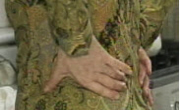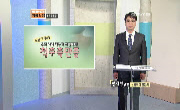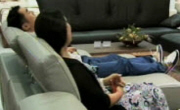The purpose of this study is to investigate the dietary intake and bone mineral density(BMDs) in college women(n=10), female swimmers(n=10), and female weight lifters(n=10). BMDs of lumbar spine(L2-L4), femoral neck, ward's triangle, and trochanter we...
http://chineseinput.net/에서 pinyin(병음)방식으로 중국어를 변환할 수 있습니다.
변환된 중국어를 복사하여 사용하시면 됩니다.
- 中文 을 입력하시려면 zhongwen을 입력하시고 space를누르시면됩니다.
- 北京 을 입력하시려면 beijing을 입력하시고 space를 누르시면 됩니다.
운동 선수들의 골밀도 및 영양상태에 대한 연구_preprint
한글로보기https://www.riss.kr/link?id=G3805783
- 저자
- 발행기관
-
발행연도
2001년
-
작성언어
Korean
-
주제어
요추 ; 척추 ; 대퇴골 ; 저항운동 ; 영양분 ; 역도 ; 수영 ; BMD ; lumbar spine ; femur ; swimming ; weight lifting ; resistant exercise ; nutrient intake
-
자료형태
한국연구재단(NRF)
-
0
상세조회 -
0
다운로드
부가정보
다국어 초록 (Multilingual Abstract)
The purpose of this study is to investigate the dietary intake and bone mineral density(BMDs) in college women(n=10), female swimmers(n=10), and female weight lifters(n=10). BMDs of lumbar spine(L2-L4), femoral neck, ward's triangle, and trochanter were measured with dual-energy X-ray absorptiometry. The results are summarized as follows. In swimmers and weight lifters, mean daily intakes of energy, protein, fat were higher than college women and the intake of carbohydrate was significantly high in weight lifters. Also in swimmers and weight lifters, mean daily intakes of animal food, phosphorus, vitamin A, vitamin B1, vitamin B2, niacin, vitamin C, and cholesterol were found higher than college women but there was difference among the types of exercise. According to correlation analysis between nutrient intake and BMDs, intakes of energy, protein, carbohydrate, and vitamin B1 were positively associated with BMDs of lumbar spines. According to stepwise multiple regression analysis, BMDs of lumbar spines were affected by intakes of protein, Fe, phosphorus, and vitamin B2, also BMDs of femur were affected by each of vegetable protein, dietary fiber, and Fe. From the above explanation, the nutrient intakes can be independent factor besides exercise. In conclusion, the weight lifting, resistant exercise, resulted in increase of both BMDs of lumbar spines and femur specially in growing and adult period. Whereas swimming lead to increase of BMDs of lumbar spine and decrease of BMDs of femur.
국문 초록 (Abstract)
해당 학술지는 2013년 7월부터 『Journal of nutrition and health』로 학술지명이 변경되었습니다.
본 논문은 실제 출판시 『여성 운동 선수들의 골밀도 및 영양섭취실태에 대한 연구』로 논문명이 변경되었습니다. 해당 학술지는 2013년 7월부터 『Journal of nutrition and health』로 학술지명이 ...
본 논문은 실제 출판시 『여성 운동 선수들의 골밀도 및 영양섭취실태에 대한 연구』로 논문명이 변경되었습니다.
해당 학술지는 2013년 7월부터 『Journal of nutrition and health』로 학술지명이 변경되었습니다.
다국어 초록 (Multilingual Abstract)
서론
연구 방법
1. 연구 대상
2. 설문조사 및 식이 섭취 조사
3. 신체계측과 골밀도 측정
4. 통계처리
결과 및 고찰
1. 대상자의 일반적 특성
2. 대상자들의 일반적인 영양섭취 및 영양권장량에 대한 비율
3. 운동 형태에 따른 요추와 대퇴의 골밀도
4. 운동형태에 따른 식이 섭취 상태
5. 요추 및 대퇴 골밀도와 식이요인과의 상관관계
6. 골밀도 변이의 영양적 설명 인자
요약 및 결론
Literature cited
부록
Abstract 서론 연구 방법 1. 연구 대상 2. 설문조사 및 식이 섭취 조사 3. 신체계측과 골밀도 측정 4. 통계처리 결과 및 고찰 1. 대상자의 일반적 특성 2. 대...
Abstract
서론
연구 방법
1. 연구 대상
2. 설문조사 및 식이 섭취 조사
3. 신체계측과 골밀도 측정
4. 통계처리
결과 및 고찰
1. 대상자의 일반적 특성
2. 대상자들의 일반적인 영양섭취 및 영양권장량에 대한 비율
3. 운동 형태에 따른 요추와 대퇴의 골밀도
4. 운동형태에 따른 식이 섭취 상태
5. 요추 및 대퇴 골밀도와 식이요인과의 상관관계
6. 골밀도 변이의 영양적 설명 인자
요약 및 결론
Literature cited
부록











